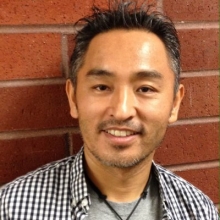Materials Characterization Using Aberration Corrected/Monochromated Scanning Transmission Electron Microscopy

Abstract: The development of aberration correction has made it possible to achieve sub-Ångstrom resolution with the latest generation of electron microscopes, thereby enhancing the opportunities for determining the structure and properties of advanced materials. The aberration-corrected scanning transmission electron microscope (AC-STEM) is a powerful and versatile instrument, because it can be equipped for imaging with a multitude of detectors including high-angle annular-dark-field (HAADF), medium-angle annular-dark-field (MAADF), bright-field (BF), and annular-bright-field (ABF), as well as enabling energy-dispersive x-ray spectroscopy (EDS) and electron-energy-loss spectroscopy (EELS) at the same time.
HAADF STEM is an incoherent imaging mode with high atomic-number sensitivity (“Z-contrast”), and it can be easily combined with EELS. Modern AC-STEMs can acquire multiple images simultaneously, and these additional imaging modes offer extra flexibility to facilitate interpretation of materials nanostructure.
In 2014, vibrational spectroscopy of organic and inorganic materials, including hydrogen containing material, was demonstrated in the electron microscope for the first time using monochromated Nion HEMES, followed by “damage free vibrational spectroscopy of biological material using aloof mode. The development of monochromator has revolutionized EELS, and it is still evolving.
In my presentation, different types of STEM imaging, especially large-collection angle BF and ABF, will be discussed, as introduction, and then, the following examples of AC-STEM and monochromated AC-STEM applications will be presented.
- AC-STEM observation of compound semiconductor heterovalent/isovelant interfaces.
- AC-STEM/EELS studies on oxide-semiconductor heterostructures.
- 40~60 keV (Gentle) STEM on 2-D (dimensional) materials (MoS2, WS2, ReS2).
- Introduction to monochromator and applications to valence EELS and vibrational spectroscopy in transmission/aloof mode.
The AC-STEM makes it possible to observe various heterostructures ( in my presentation, II-VI/III-V, oxide-semiconductor, oxide-oxide) at atomic resolution and help us understand how growth conditions, lattice mismatch, and other conditions could affect quality of materials grown. Also the AC-STEM, when combined with EEL spectrometer and EDX spectrometer, makes to study chemistry of materials at atomic level. With improved energy resolution, EELS could allow us to see vibration of atoms, band gap of not only bulk materials but also 2D materials.
Biography: Toshi “Hiro” Aoki is a materials scientist/engineer specializing in nanomaterials characterization using aberration corrected electron microscopy. Educated at Arizona State University (ASU), a world reknowed institution in the field of high resolution electron microscopy (http://le-csss.asu.edu/winterschool), and field trained in JEOL USA, a major supplier of electron microscopes, Toshi developed a deep understanding of practical electron optics and applications of aberration corrected-TEM/STEM to characterization of nano-structured materials. After serving in JEOL USA TEM service application group for 8 years, he decided to return to ASU to assist operation of Southwestern Center for Aberration corrected Electron Microscopy (http://le-csss.asu.edu/node/220), housing start-of-the-art aberration corrected JEOL-ARM200F and world's most powerful NION UltraSTEM 100 equipped with 3rd generation C3/C5 corrector and newly developed monochrometer and a TEM-corrected FEI ETEM Titan equipped with X-FEG, monochrometor, and biprism.
Share
Upcoming Events
-
MSE 298 Seminar: Mechano-Electrochemical Phenomena at Ceramic Electrolyte Interfaces
-
CBE 298 Seminar: Beyond the Tailpipe - From the Science of Soot Formation to the Engineering of Carbon Nanomaterials
-
MSE 298 Seminar: Innovation In Materials Science - An Industrial R&D Perspective
-
MSE 298 Seminar: Understanding the Impact of Grain Boundary Inclination on Grain Growth Using Modeling and Simulation and Experiments
-
EECS Seminar: Mixed Conductors for Bioelectronics
